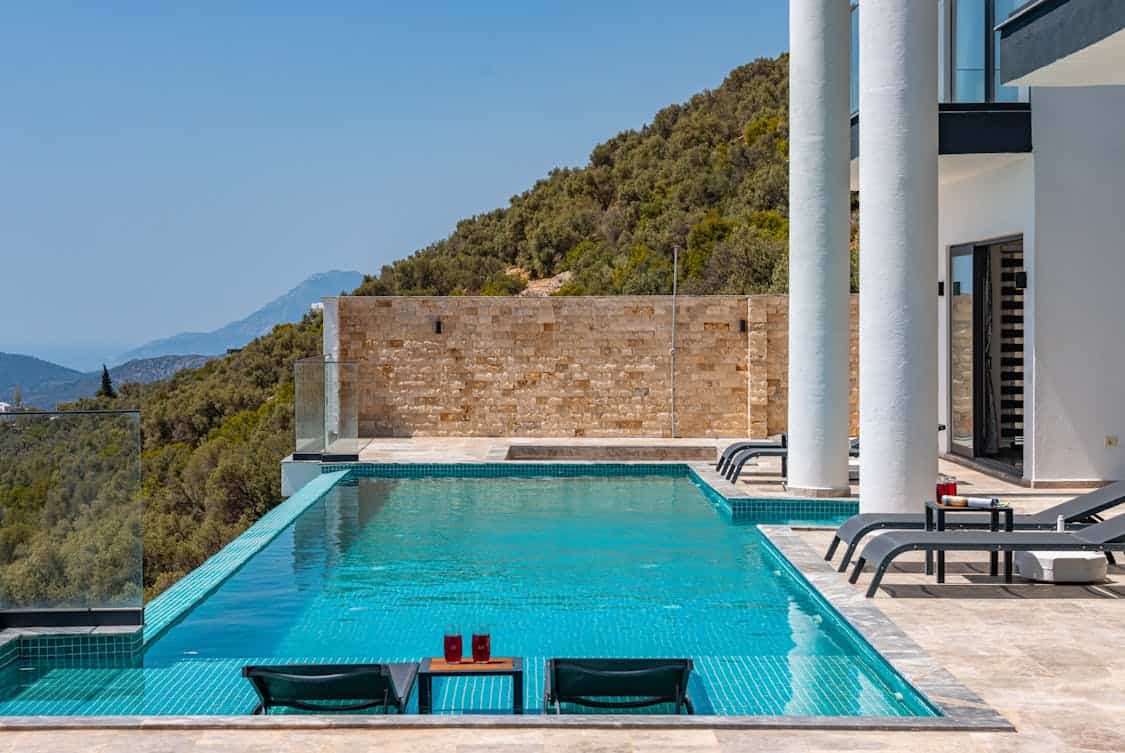
When you’re considering adding a swimming pool to your backyard, one of the most significant decisions revolves around the type of pool you want.
Concrete and fiberglass pools are two popular options, each having unique benefits and drawbacks. This article will help you navigate the choices, weighing factors such as cost, maintenance, installation, and aesthetics.
Understanding Concrete Pools
Concrete pools are often referred to as gunite pools. They are built by spraying concrete and sand mixture into a mold, which gives them a custom shape and size. This flexibility is one of the standout features of concrete pools.
Customization and Size

One of the appealing aspects of concrete pools is their potential for customization. Homeowners can design pools of various shapes and sizes, fitting specific yard layouts and personal tastes.
Whether you’re envisioning a classic oval shape or a modern geometric design, concrete can accommodate your vision. For homeowners who want tailored designs, trusted pool builders in Byron Bay specialize in creating custom layouts that match any backyard style.
Durability and Longevity
Concrete pools are built to last. With proper maintenance, they can withstand the elements and resist wear and tear for decades. Homeowners often appreciate the sturdy nature of these pools, which can handle heavy use and extreme weather conditions.
Exploring Fiberglass Pools
Fiberglass pools are pre-manufactured shells made from reinforced fiberglass. These shells are transported to your property and installed in a pre-dug hole, making the process relatively quick.
Installation Speed
One of the most significant benefits of fiberglass pools is their installation speed. The process can often be completed in a matter of weeks, compared to the months it may take to install a concrete pool. If you’re eager to enjoy your pool, this rapid timeline might be appealing.
Smooth Finish and Maintenance
Fiberglass pools typically feature a smooth, gel-coated finish, which helps prevent algae growth and makes cleaning easier. The non-porous surface can save time and effort when it comes to upkeep, a big win for busy homeowners.
Cost Considerations
Budget is often a deciding factor in your pool decision. Both concrete and fiberglass pools come with their own price tags, and understanding the differences can help in making an informed choice.
Initial Investment
Concrete pools generally have a higher initial cost due to the custom construction process and materials involved. On average, they can range from $50,000 to $100,000 or more, depending on size and design complexities.
Long-term Expenses
While the upfront cost of fiberglass pools tends to be lower—ranging from $30,000 to $60,000—it’s essential to factor in long-term costs.
Concrete pools may require more maintenance and resurfacing over time, while fiberglass pools have a reputation for lower ongoing expenses.
Maintenance Requirements
Maintaining a pool can be a chore, but understanding the differences in maintenance between concrete and fiberglass pools can guide your decision.
Regular Care for Concrete
Concrete pools require regular care, including brushing the walls to prevent algae buildup and checking for cracks or surface issues. Resurfacing might be necessary every 10 to 15 years, which can lead to additional costs.
Simplicity with Fiberglass
Fiberglass pools maintain a reputation for being easier to care for. Their smooth surfaces reduce the chances of algae growth, and most owners find they need fewer chemicals to keep the water balanced. Seasonal opening and closing tend to be less labor-intensive as well.
Aesthetic Appeal
The look of your pool can be just as crucial as its functionality. Both types offer various options to suit different tastes.
Versatile Designs in Concrete
Concrete pools allow for a diverse range of finishes, colors, and features. You can incorporate waterfalls, lighting, and custom tiling. This versatility helps homeowners create unique aesthetics that reflect their style.
Fiberglass Colors and Shapes
Fiberglass pools come in various shapes and colors, but with less flexibility compared to concrete. While they may not offer the same customization, the options available are still appealing and can suit many tastes.
Environmental Impact
Considering the environmental impact of your pool choice is becoming increasingly important for many homeowners.
Water and Chemical Usage
Concrete pools may require more chemicals to maintain water quality due to their porous surfaces. On the other hand, fiberglass pools often need fewer chemicals, which can be better for the environment and your health.
Energy Efficiency
Fiberglass pools tend to hold heat better, reducing heating costs in cooler climates. This energy efficiency can be a significant factor for environmentally conscious homeowners.
Climate Considerations
The climate where you live can also influence your decision. Different materials respond to temperature variations in unique ways.
Cold Weather Performance
Concrete pools can crack in freezing temperatures if not properly maintained. In contrast, fiberglass pools are more resilient in colder climates, as they can flex with temperature changes without suffering damage.
Warm Climate Suitability
In warmer climates, both types perform well, but the insulating properties of fiberglass may lead to lower cooling costs. It’s worth assessing how each option aligns with your local climate conditions.
Resale Value
If you ever plan to sell your home, the type of pool you choose may influence its market value.
Concrete Pools and Home Value
Many potential buyers view concrete pools as a premium feature. Their customizability and durability can add significant value to a property. However, the pool’s condition and maintenance history will play a vital role in determining its appeal.
Fiberglass Pools and Market Trends
Fiberglass pools are growing in popularity, especially among younger families. While they might not have the same cachet as concrete pools, their ease of maintenance and longevity can attract buyers looking for a low-maintenance option.
